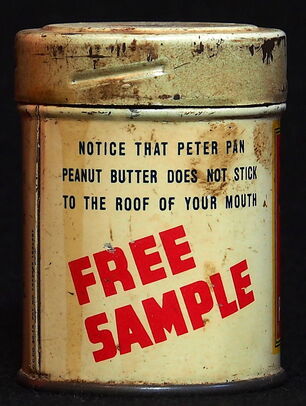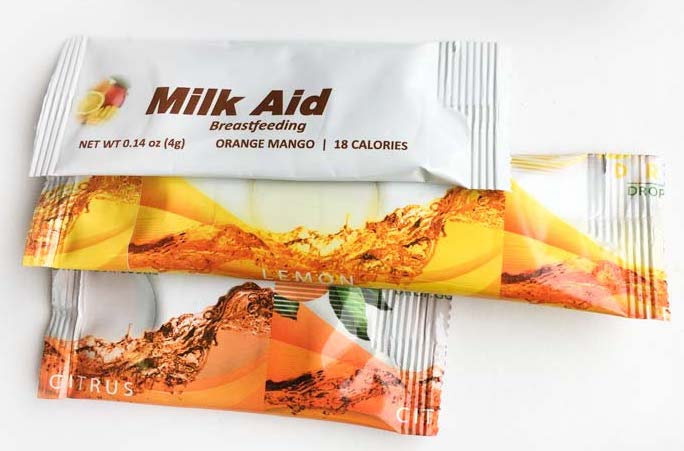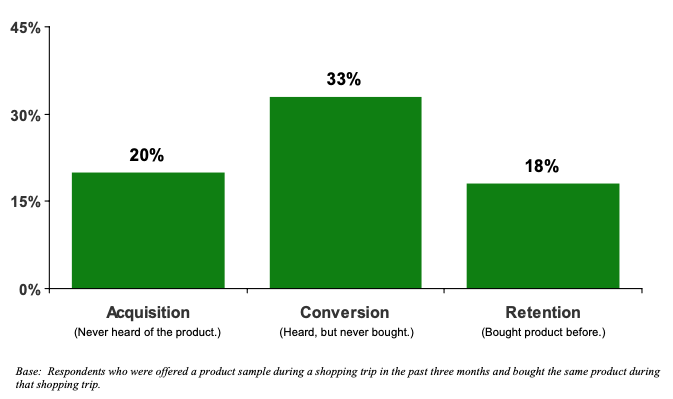|
This is a guest post by Cindy Johnson. Cindy is a product sampling and promotions expert for CPG brands. Before starting Sampling Effectiveness Advisors in 2004, Cindy worked for P&G in Brand Marketing and as Corporate Sampling Programs Manager. Just three months ago, I deleted a white paper I had written in 2009 on the economy and its impact on sampling. I thought “we don’t need this anymore”. How quickly things change! I pulled the document out of the recycle bin and have updated it to provide more information: In 2009, more than 80% of consumers said the economy is their greatest source of stress (American Psychology Association). More than two-thirds were worried about maintaining their standard of living; a 30% increase in just a year! (PROMO Apr.2009) *. I fear we are in worse situation now than we were during the recession, since consumers are not only concerned about their bank accounts, but also fear for their lives. Psychologists say consumers can better handle the uncertainty and anxiety caused by uncertain times when they begin to take more control of their individual situations. While the impulse might be to put your head under the pillow, put your money under the mattress, and say “Wake me when it’s over”….the better course of action is to get a handle on decisions concerning finances and to keep spending under control by shopping with a list. It wasn’t too many years ago that marketing experts were quoting percentages as high as 80% for the percentage of shopping decisions made in-store. However, a study by IRI indicated most shopping decisions were being made at home for the bulk of US households (76%). With high unemployment, consumers can’t make as many impulse buying decisions in the store, like they had in past years. We are definitely in a new era of decision making! In 2009, The Food Marketing Institute survey reported 71% of respondents were eating out less often and cooking more at home as a result of the recession (Brand Week). Now with restaurants not being able to have customers inside, that number will be even higher in 2020! WordSpy defines the word “homedulgence” as “during a recession, the need for consumers to prefer home-based indulgences”. The move to homedulgence is one-way consumers can ride out a recession, and extend it to other areas of life, such as mix-your-own cocktails and home dining parties. Rather than spend $150 on a dinner for two at a five-star restaurant, consumers can spend less money to host a small dinner party for friends. Instead of spending $30 on fast-food to feed her family one meal, moms will use that same money to make three balanced-meals at home. According to 80% of shoppers in 2009, purchasing behavior was influenced by price. Promo Magazine (March 17, 2009) reported that 20% of consumers were buying more private label brands and that coupon redemptions grew 10% in the last quarter of 2008 - the first jump in redemptions since the early 90’s. CouponInfoNow.com reported that redemptions were also up 19% in the first quarter of 2009. While coupons aren’t quite as popular as they were ten years ago, we should expect this same type of behavior in 2020. In a nationwide poll of 431 women with children, 65% had said they had eliminated from their spending “anything I don’t feel is absolutely necessary for my lifestyle.” Only 12% told pollsters they hadn’t altered their household finances in any way. (PROMO magazine, Nov. 2008). Not only did consumers look for efficiencies with their grocery budgets, they looked for quality and healthy choices. Despite the economy, consumers did show a willingness to pay more for organic or natural products - per a study released by the Natural Marketing Institute and the Nielson Company. With so much interest in improving the body’s immune system, consumers will again be looking for healthy choices. The only way to feel any amount of control over this situation is to take charge of spending habits; this means making shopping lists, looking for value and quality, limiting the consumption of calories, eating at home, and making the most of the dollars available to them. Impulse buying will be impacted; shoppers will create online grocery lists for pickup at the retailer or are likely to have a list to get in and out of the store as fast as possible. Marketers can take much of the perceived risk out of new purchases by increasing product sampling (Promo Magazine). How does product sampling fit into this equation?First and foremost, no other marketing activity gives the consumer the actual brand experience or allows the consumer to make a purchase decision without a risk. Coupons are a preferred marketing tool during a recession (as evidenced by the increase in redemptions), but if the coupon is for a new product, most households aren’t in a position to risk a portion of their budget on a new item that might not be consumed. To get a new initiative off the ground in a slow economy, product sampling is critical to the success of the brand because it’s the only way to ensure trial. When consumer confidence is low (as it is now), brands should be willing to prove their product is great - by offering a free sample. What’s the best way to approach sampling planning in hard economic timesObviously targeting is essential to the success of a sampling campaign. And while targeting is one of the key decisions of a successful sampling campaign, if sampling doesn’t result in trial - the sampling campaign will not be successful. Marketers need to consider when and where to reach their target; otherwise the sample could be wasted. Beyond the basic sampling effectiveness principle of reaching the target when & where he/she is receptive, brand marketers must consider the economic climate, its impact on shopping behavior, and the consumer’s reluctance to risk much of the shopping budget. Brands also need to be aware that consumers are planning grocery shopping trips in advance and that there will be a renewed interest in “homedulgence”. What are the requirements of a successful program today?Brand marketers should use the sampling effectiveness checklist below to make sure the program meets the 4 key requirements of a successful sampling campaign during a recession:
What programs will provide the best results in this economyBrands frequently use event sampling or experiential type programs for sample delivery in a better economy, when consumers are out and about. There are fewer programs available (especially during a quarantine) that reach consumers when and where they are considering brand choices. Due to the pandemic/economy and its impact on shopper behavior, sampling may call for a new strategy! Consumers are at-home once again and they are doing more planning and evaluating of their options. Air travel and events are not an option right now. In 2009, 49% of consumers said they planned to cut back on leisure travel in the future (Brand Week, June 2008). Because todays’ consumers will be attending far fewer events and will be traveling less, brands must find ways to reach consumers in a relevant and uncluttered way. For more ideas on how to deliver your sample to your target consumer while incorporating all the principles of sampling effectiveness, contact Sampling Effectiveness Advisors. SEA’s goals are the same regardless of who we work with: to provide a better return on the brand’s sampling investment by reducing costs and increasing trial and purchase results. About the Author: Cindy Johnson is a product sampling and promotions expert for CPG brands. Before starting Sampling Effectiveness Advisors in 2004, Cindy worked for P&G in Brand Marketing and as Corporate Sampling Programs Manager.
0 Comments
Research on sampling has been going on for several decades and the results remain pretty consistent over time. Giving someone a sample of your product has always had a tremendous return on the investment.  Cindy Johnson was a product sampling expert for CPG brands and now owns a company called Sampling Effectiveness Advisors. During Cindy's career with P&G, she worked with all brands in her role as Corporate Sampling Programs Manager. According to a report Cindy authored entitled "Why Sampling?" she found that 73% of consumers asked to evaluate eight marketing channels’ influence on their purchasing decisions said a product sample would persuade them to buy a new product, versus 19% for a TV ad. Based on a report from Sampling Effectiveness Advisor report:
"Most brands will consider product sampling only if they have a new product (or line extension) which affords them the opportunity to include sampling in the marketing plan. However product sampling can deliver strong results behind a number of different objectives. While the only reason for product sampling is to induce trial, sampling has been shown to be successful in delivering various objectives and under many situations. (Each of the examples assumes that trial objectives are met by chosing the right program, target, etc.)." What Can Product Sampling Do?Product sampling can:
According to IBR Packaging, a sampling program is a great solution for marketing your product to target consumers. Whether you're trying to attract new customers or get the word out about new products to your returning customers, creating samples can be just what you need. Incredibly-effective advertising. What better way to show off your product than by actually sending your products! According to the USPS, product samples reach 70 million consumers. Quarterly! Sending out your product sample is the best way to introduce your brand, introduce a new product or re-introduce your company to consumers. Get new customers. Sending out foil pouches or cosmetic packaging filled with your liquid products, gives people a chance to try what you are selling so they will want to purchase it. They may not commit to buying a full-size product in stores if they don’t know anything about it. By giving them a trial, they can try it for themselves and see why the product is worth their time. "A study found 50% of consumers who try a sample plan to purchase the product after." Customer retention. You may have customers out there that haven’t bought your product in a while, and maybe they forgotten why they love it. Send them sample packets and remind them what your company is all about! Encourage brand recognition. According to information on the USPS website, 92% of consumers have bought products after trying samples. Sending your brand name and information to customer homes helps them to remember it later while they are shopping. Get customers to your website. 84% of people involved in the USPS poll said they would probably log onto a website if they received a card driving them there, and also might sign up to receive samples. Skip the sign up part. Just send the samples on an onsert card! For More information on packaging for your product sample to attach to an insert card, contact: IBR Packaging
2225 E Belt Line Rd #105 Carrollton, TX 75006, USA Phone: 1-888-829-6509 Email: [email protected] Opinion Research Corporation found
As an industry-specific example, Euromonitor International reports that…
A Nielsen study determined the factors of a purchase that could sway consumers, too. This kind of information is important in determining which aspect of your product is better than the competitors’ in order to leverage that element as a selling point. Most importantly:
"The best way to sell somebody your product is to put it in their hands". That been the adage of people selling products since the guy who invented the wheel and axle attached it to the dark behind basket. That being said, an advertiser or publisher still needs to know how statistically effective is it to provide a product sample to consumers. From January 18 to February 15, 2008, Arbitron and Edison Media Research conducted a national telephone survey. 1,857 respondents, ages 12 and older, were selected at random from Arbitron’s 2007 fall diarykeepers. In geographic areas where Arbitron diarykeepers were not available (representing 8% of the population), a supplemental sample was interviewed through random selection. The final report was titled: "Product Sampling Study" and it found product sampling reaches 70 million consumers every quarter, and one-third of customers who try a sample will buy the sampled product. Samples play a very significant factor in brand loyalty and awareness. More than 58% of those surveyed reported that they would buy the product again. Consumers were grouped into three categories: Acquisitions, or those who were new to the sampled product; Conversions, or those who had heard of the product but had never bought it; and Retentions, or those who had previously purchased the product. Fully 85% of the Retentions and 60% of the Conversions said they would in the future purchase the sampled product; samples encouraged nearly half (47%) of the Acquisitions to purchase the product in the future. "Will you plan to buy the product sampled in the future" Answer: "Yes" The study also found:
|
AuthorHere's where you will find some ideas on how to maximize your onsert marketing, some press releases, news stories and events. Archives
May 2020
Categories
All
|
HoursM-F
7am - 9pm CST |
Telephone+1-850-543-5493
|
|




 RSS Feed
RSS Feed